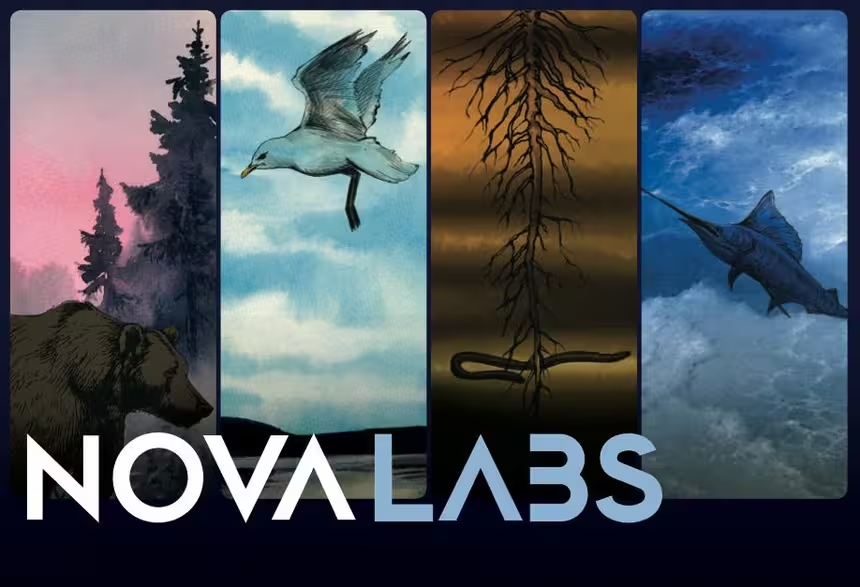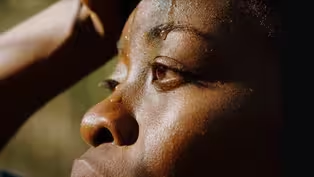
How Sewage Becomes Drinking Water
Clip: Season 50 Episode 5 | 2m 51sVideo has Closed Captions
How do you make wastewater drinkable? It starts at the sewage treatment plant.
Ongoing droughts are straining the supply of clean drinking water. One solution might lie in an unexpected source: wastewater. Through a method of purification called reverse osmosis, Orange County is making millions of gallons of dirty water drinkable again.
Problems playing video? | Closed Captioning Feedback
Problems playing video? | Closed Captioning Feedback
Additional funding is provided by GBH Planet Future Fund. Major funding for NOVA is provided by the NOVA Science Trust, the Corporation for Public Broadcasting , and PBS viewers.

How Sewage Becomes Drinking Water
Clip: Season 50 Episode 5 | 2m 51sVideo has Closed Captions
Ongoing droughts are straining the supply of clean drinking water. One solution might lie in an unexpected source: wastewater. Through a method of purification called reverse osmosis, Orange County is making millions of gallons of dirty water drinkable again.
Problems playing video? | Closed Captioning Feedback
How to Watch NOVA
NOVA is available to stream on pbs.org and the free PBS App, available on iPhone, Apple TV, Android TV, Android smartphones, Amazon Fire TV, Amazon Fire Tablet, Roku, Samsung Smart TV, and Vizio.
Buy Now

NOVA Labs
NOVA Labs is a free digital platform that engages teens and lifelong learners in games and interactives that foster authentic scientific exploration. Participants take part in real-world investigations by visualizing, analyzing, and playing with the same data that scientists use.Providing Support for PBS.org
Learn Moreabout PBS online sponsorship- [Narrator] Moving water from areas of abundance to areas of scarcity was the kind of mega engineering that made the modern state of California possible.
Over 1500 dams and about 4,000 miles of canals had been rerouting water across the state for decades.
But the population had exploded, more than tripling since the 1950s.
With the system nearing a breaking point, one thing was clear.
- The old engineering solutions of the past just weren't gonna sustain us going forward.
- [Narrator] So they focused on a source flowing right under their noses, 200 million gallons of waste water literally going down the drain every day.
But how do you turn the county's dirty water into something people can actually drink?
It starts at the Orange County Sewage Treatment Plant.
Here, the largest solids are separated from the raw sewage and smaller particles are allowed to settle to the bottom of enormous tanks.
Air rating the remaining waste water provides oxygen to pollutant eating bacteria, which process the water to be clean enough to release into the environment.
For decades, that meant all of the treated water was pumped several miles out into the Pacific Ocean.
- Literally tens of millions of gallons a day just going out to the ocean being lost, essentially.
- [Narrator] Could those millions of gallons be the solution to Orange County's dwindling aquifer and also make their system essentially drought proof?
- We knew that people had done water recycling.
They just hadn't done it to a point where that water could be really efficiently reintroduced into a groundwater basin, but we knew it was possible.
- [Narrator] Today, Mehul's plant finishes the job.
It's a computer operated system of airtight tubes and underground pipes.
At the heart of the operation is a process called reverse osmosis, where 1000 horsepower engines push the water through tightly wrapped membranes, filtering out impurities like pharmaceuticals, viruses, and salts.
- So this is the end of the process.
We can see how the water started out.
You can see everything that was removed and then you can see the purified water here that's safe enough to drink but we'll still go through a couple more steps after this.
How Coating Roads Could Help Beat the Heat
Video has Closed Captions
Clip: S50 Ep5 | 1m 48s | A pilot program in Phoenix, Arizona aims to cool the city by making the ground less hot. (1m 48s)
How Extreme Heat Overwhelms the Human Body
Video has Closed Captions
Clip: S50 Ep5 | 1m 26s | When it comes to extreme weather, heat can be a “silent killer.” (1m 26s)
Hurricanes Are Getting More Destructive
Video has Closed Captions
Clip: S50 Ep5 | 4m 15s | Recent hurricanes blow away records for destruction, costing over a trillion dollars in 20 years. (4m 15s)
Video has Closed Captions
Preview: S50 Ep5 | 30s | Americans use ancient wisdom and new technology to fight extreme weather. (30s)
Providing Support for PBS.org
Learn Moreabout PBS online sponsorship
- Science and Nature

Capturing the splendor of the natural world, from the African plains to the Antarctic ice.













Support for PBS provided by:
Additional funding is provided by GBH Planet Future Fund. Major funding for NOVA is provided by the NOVA Science Trust, the Corporation for Public Broadcasting , and PBS viewers.






